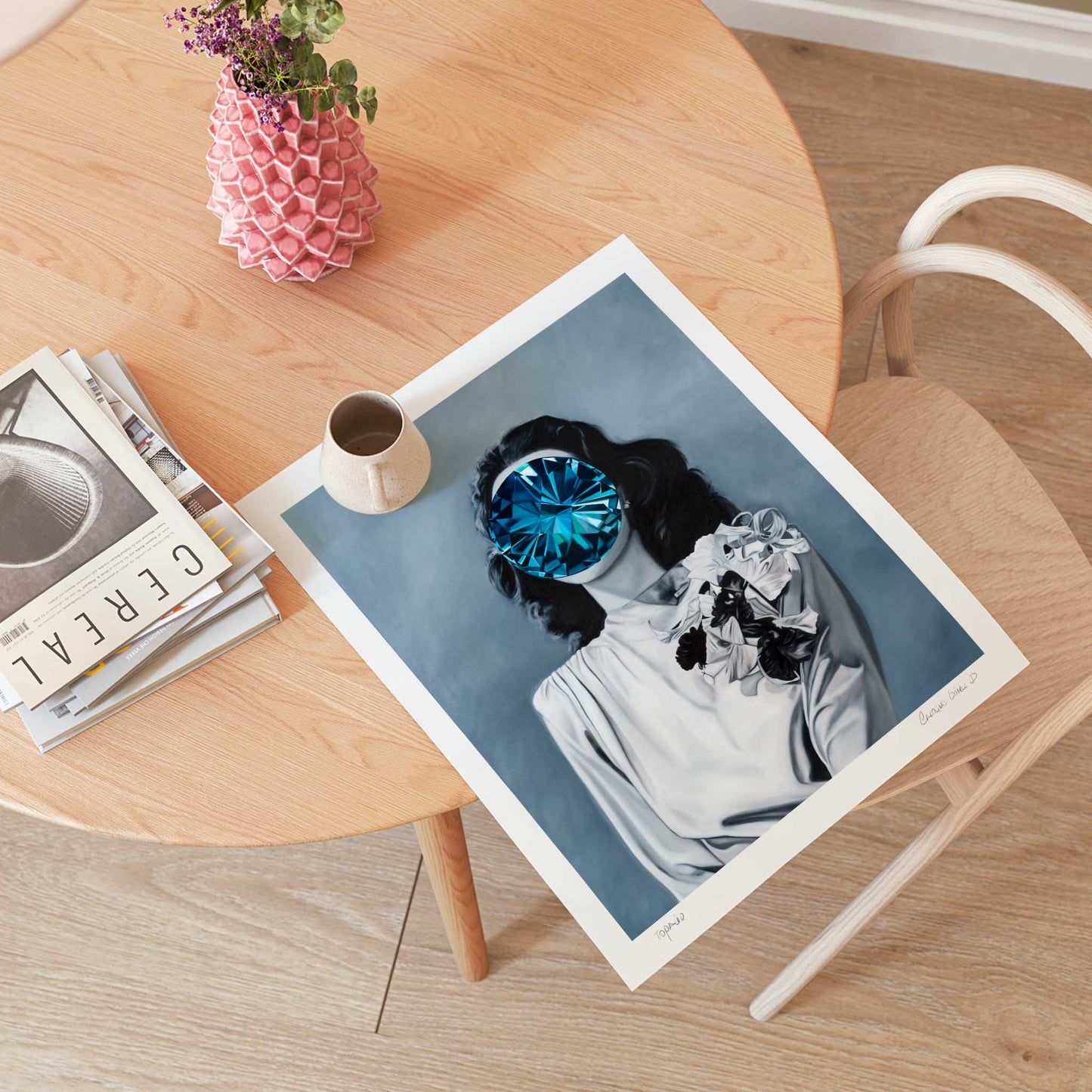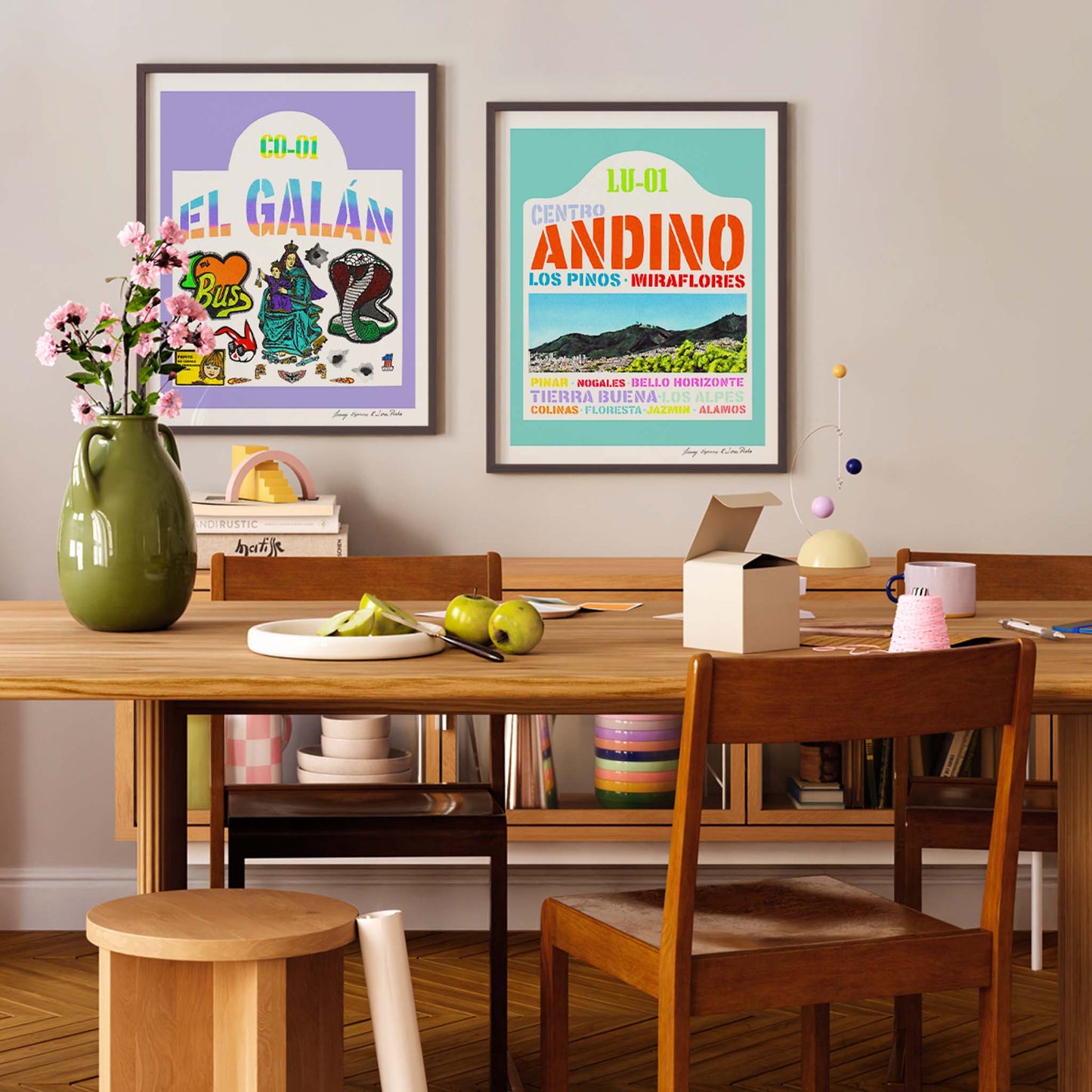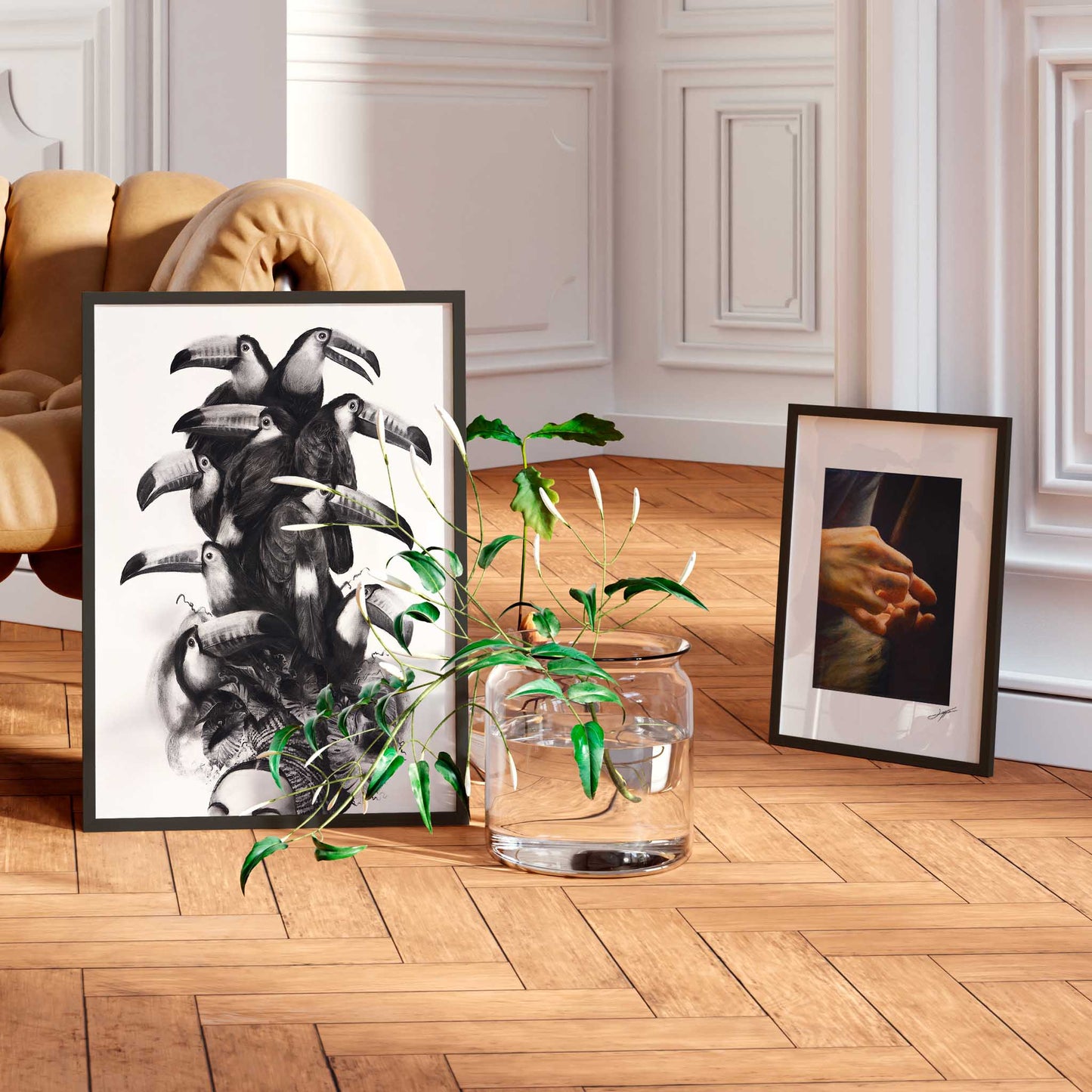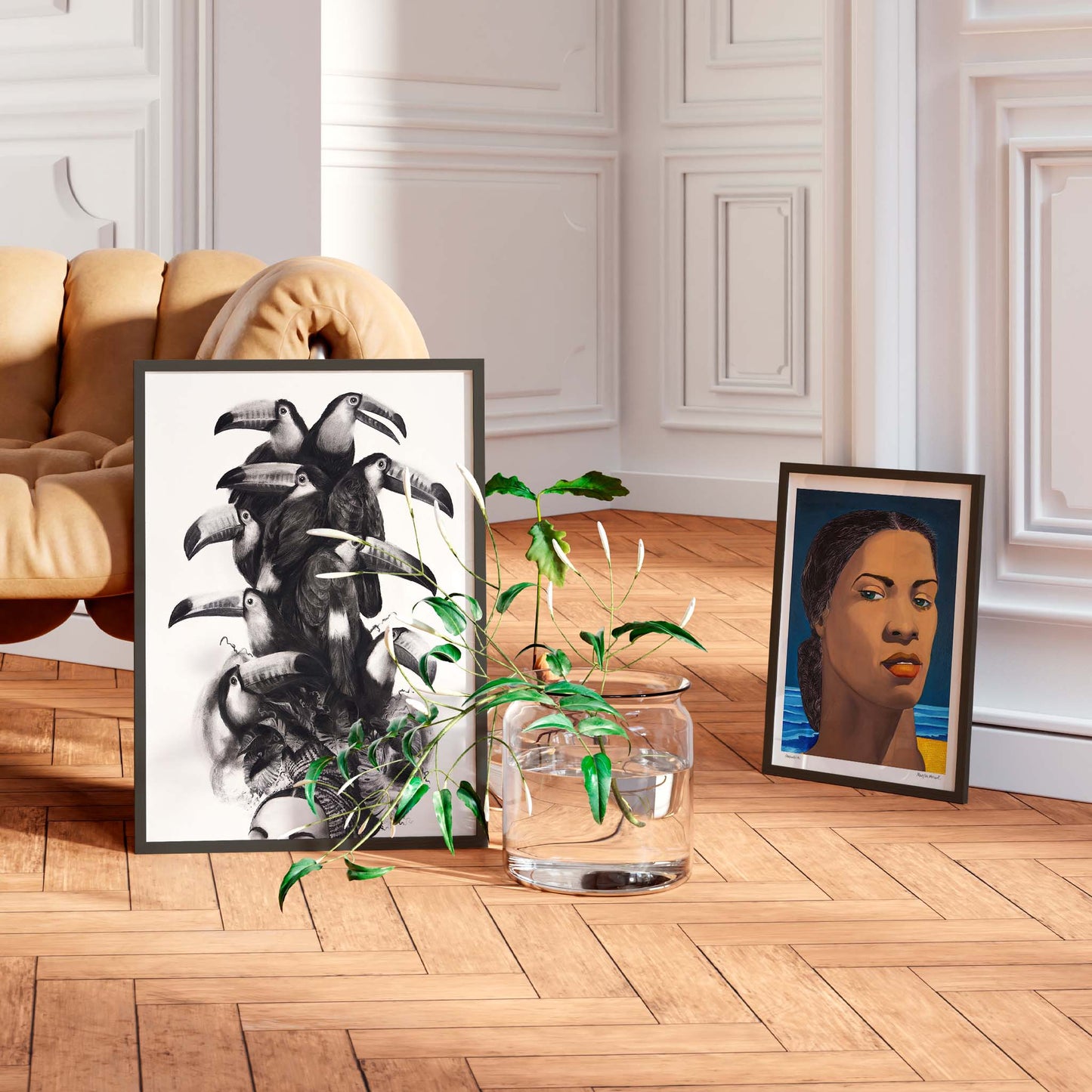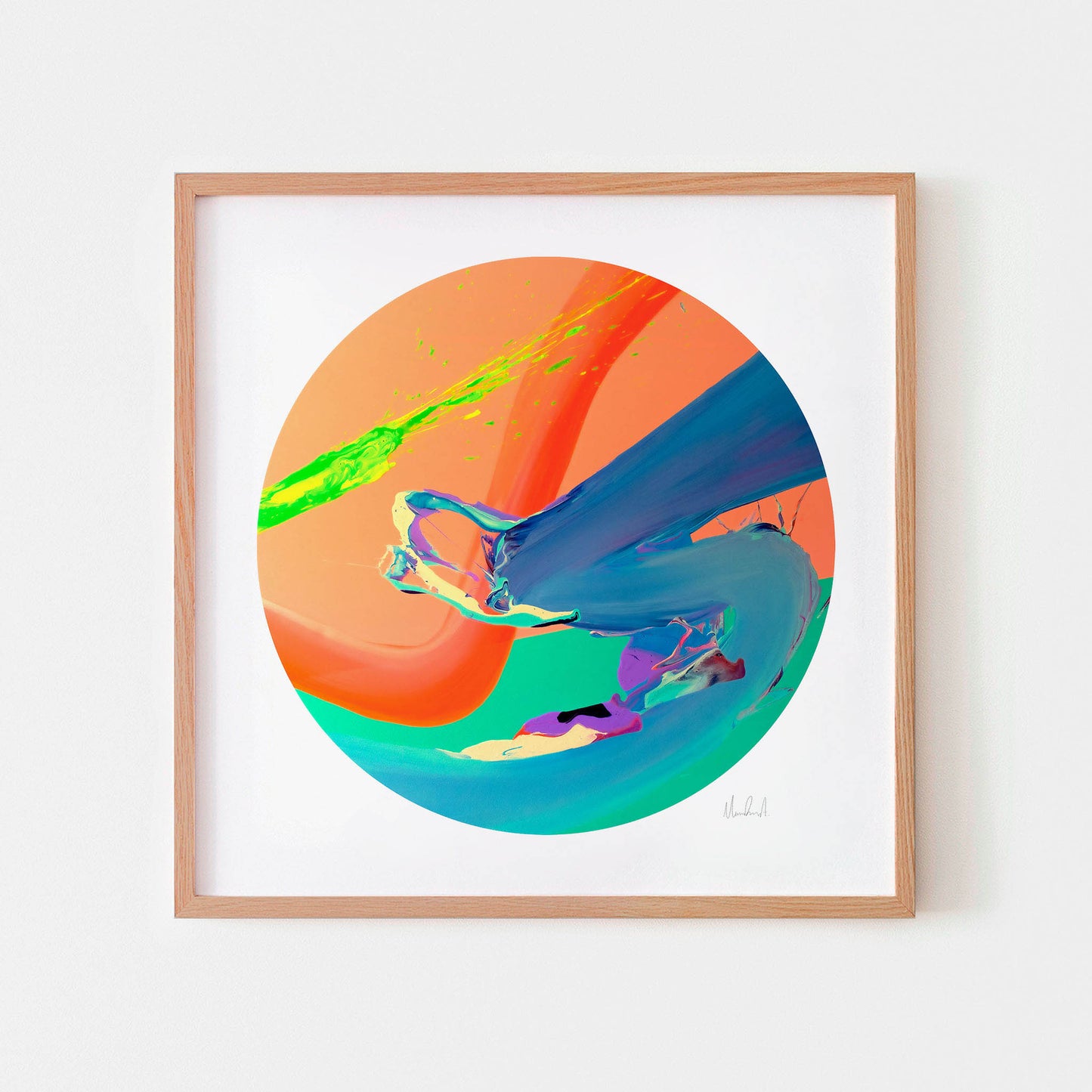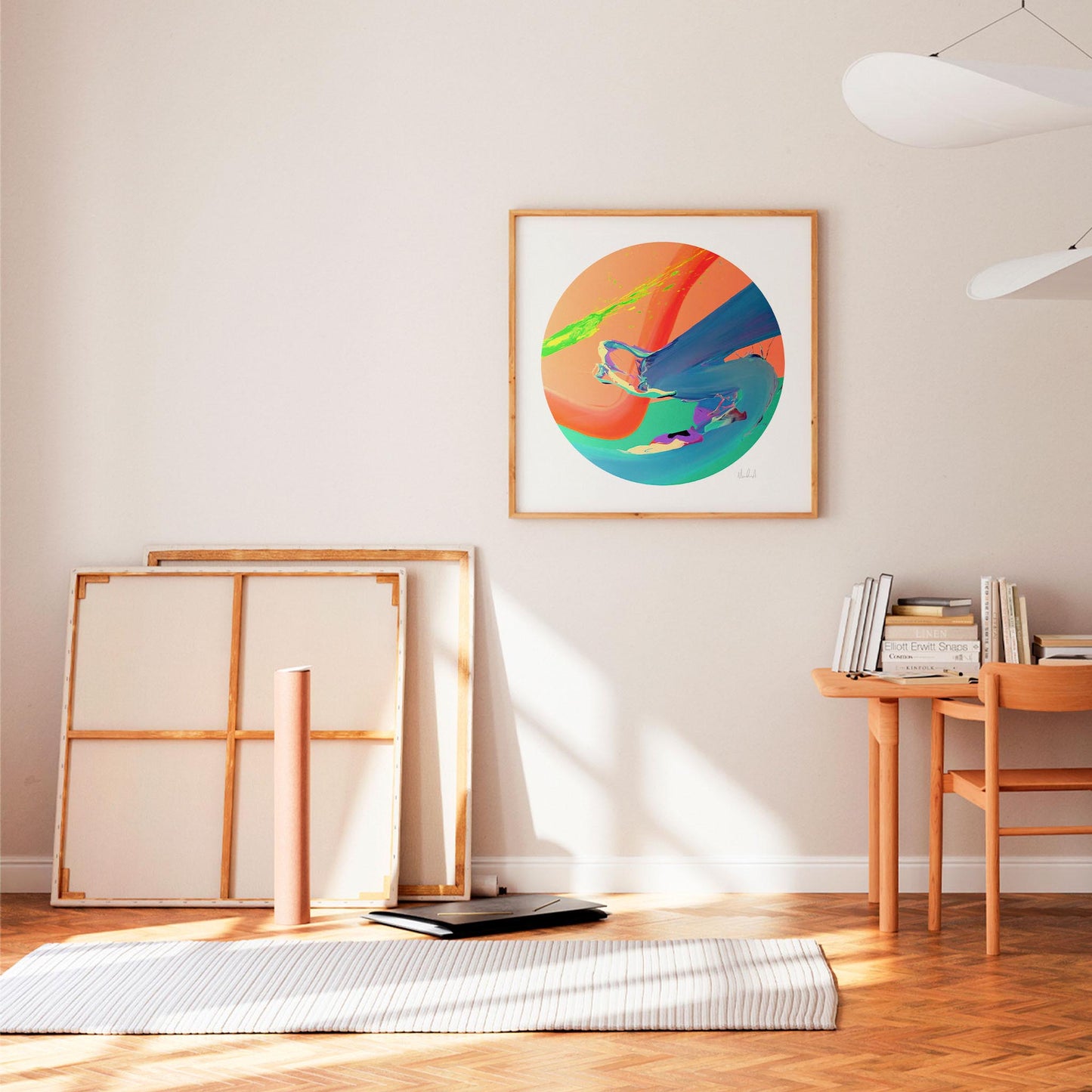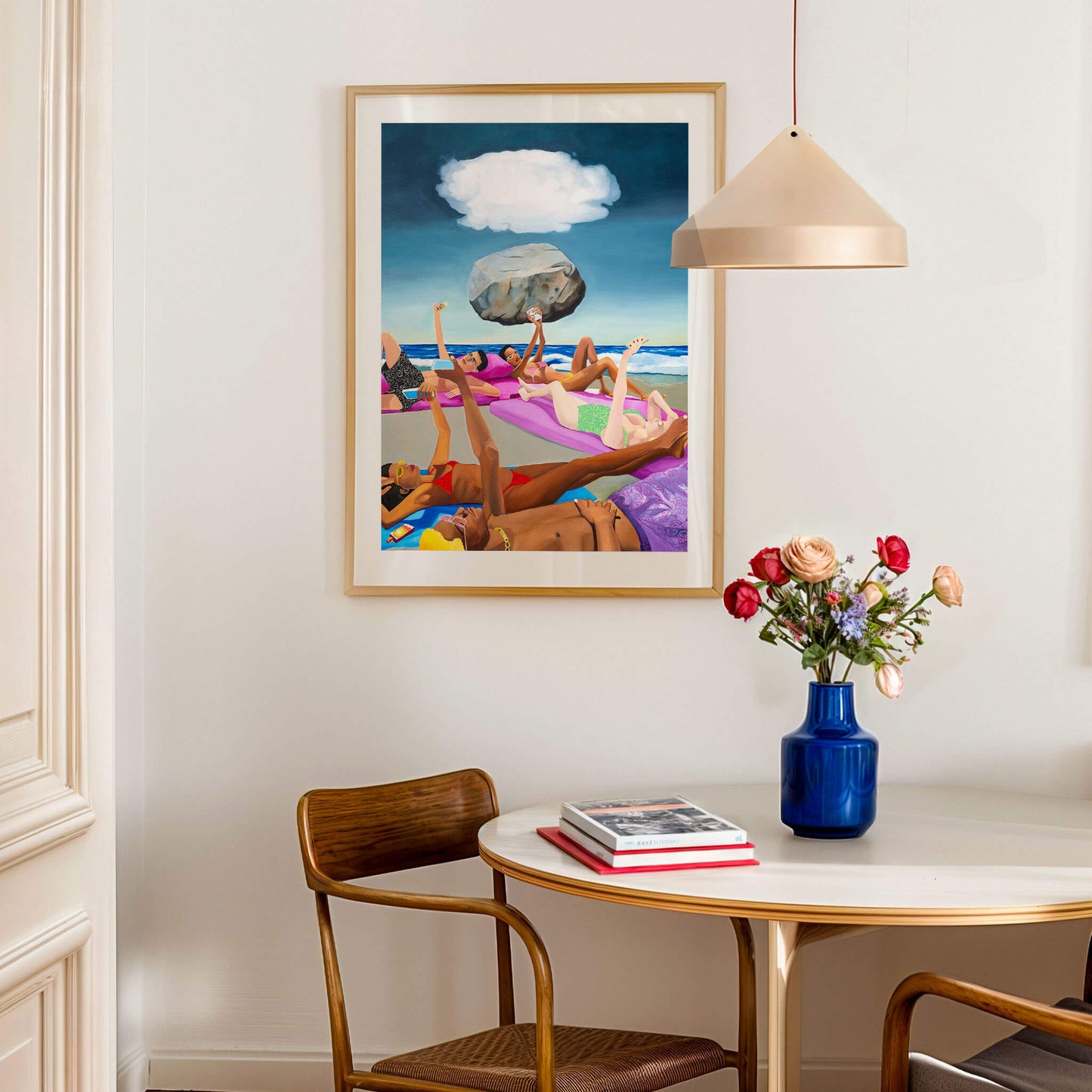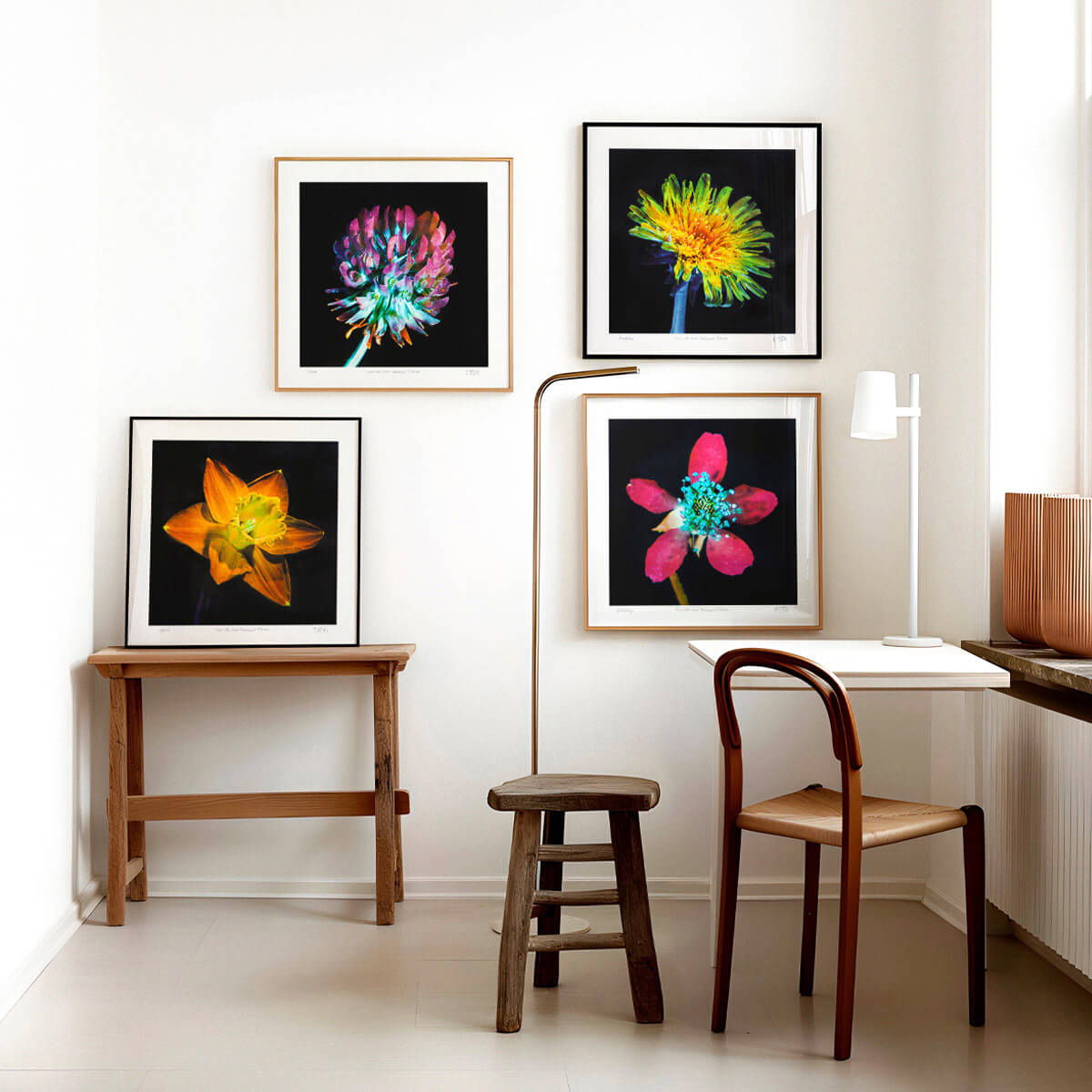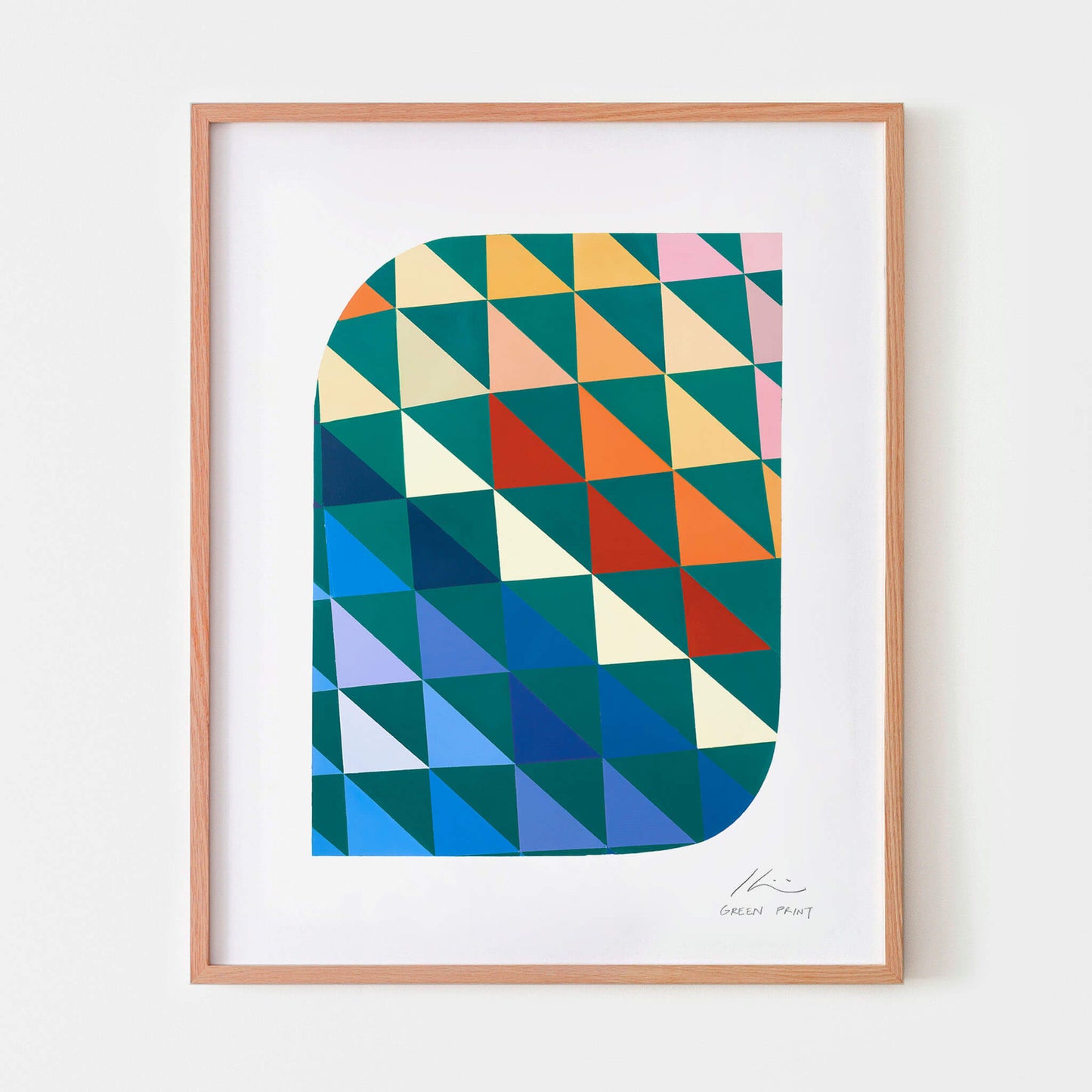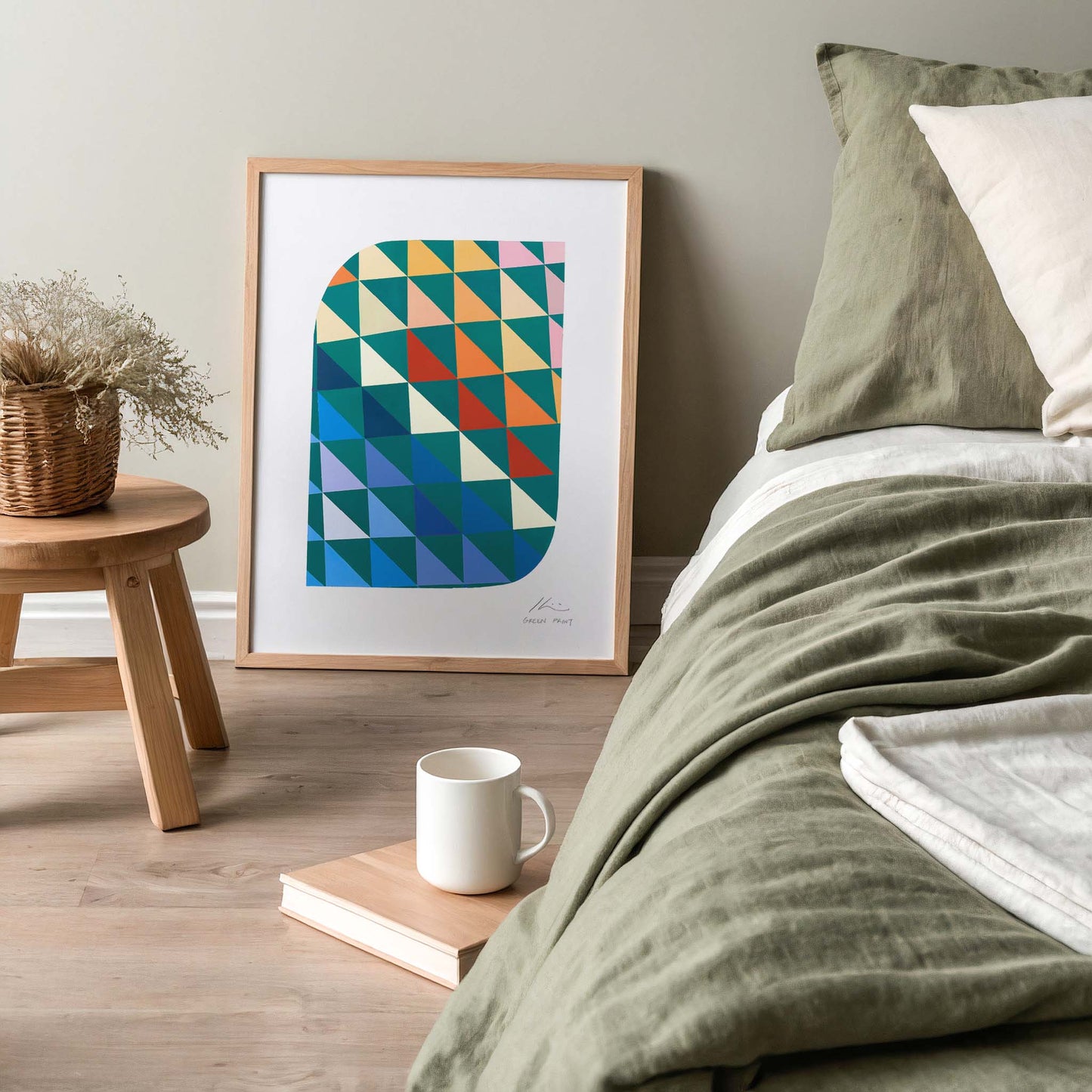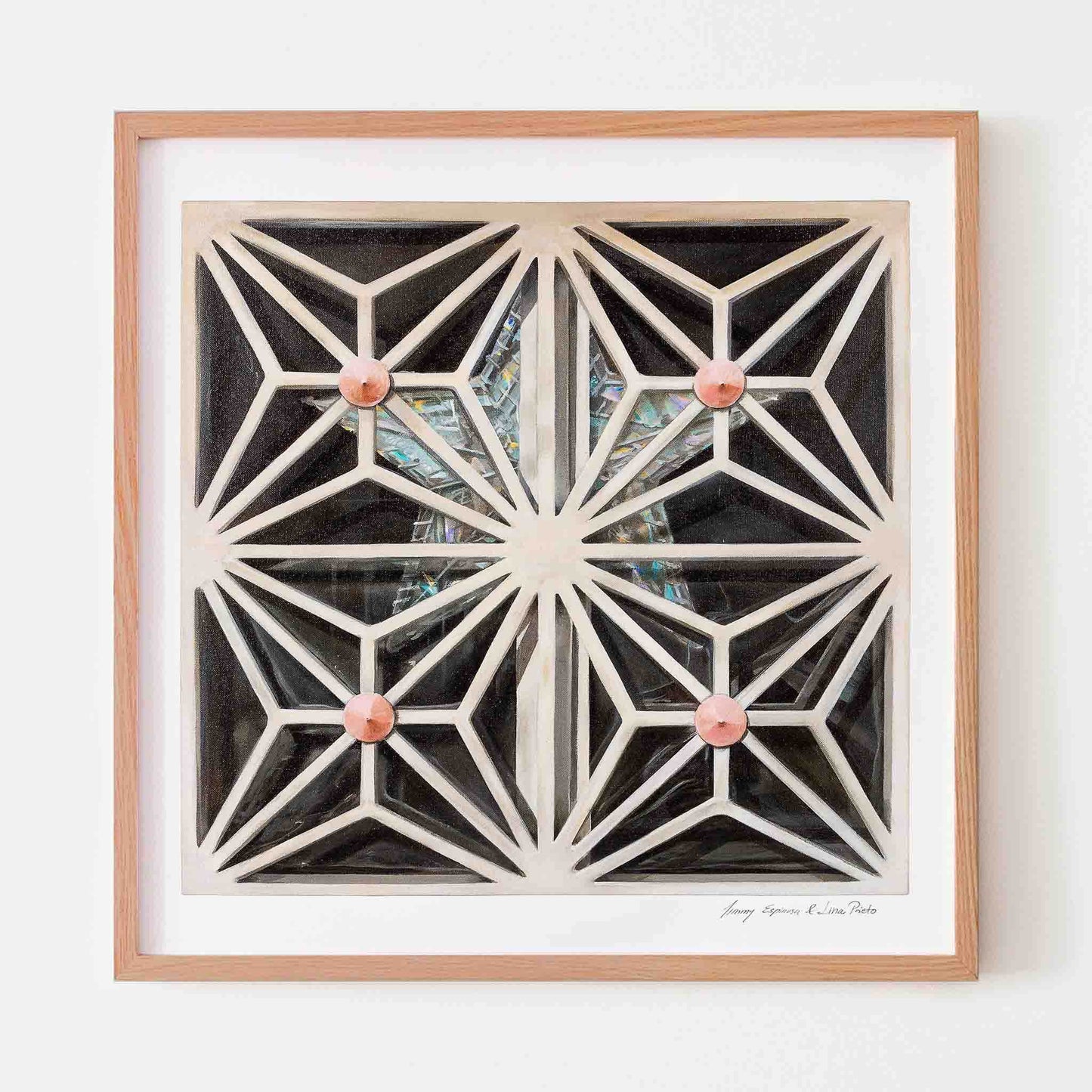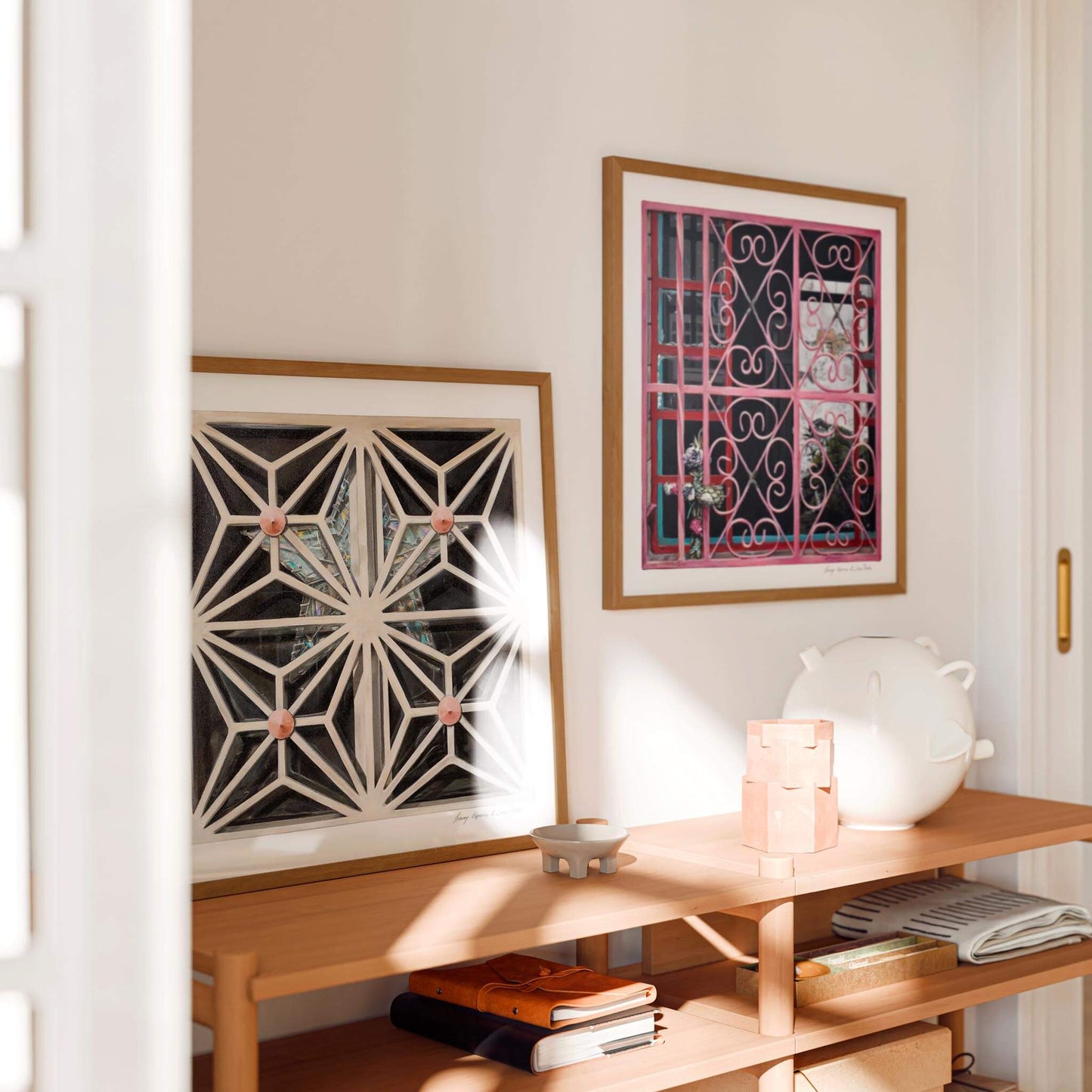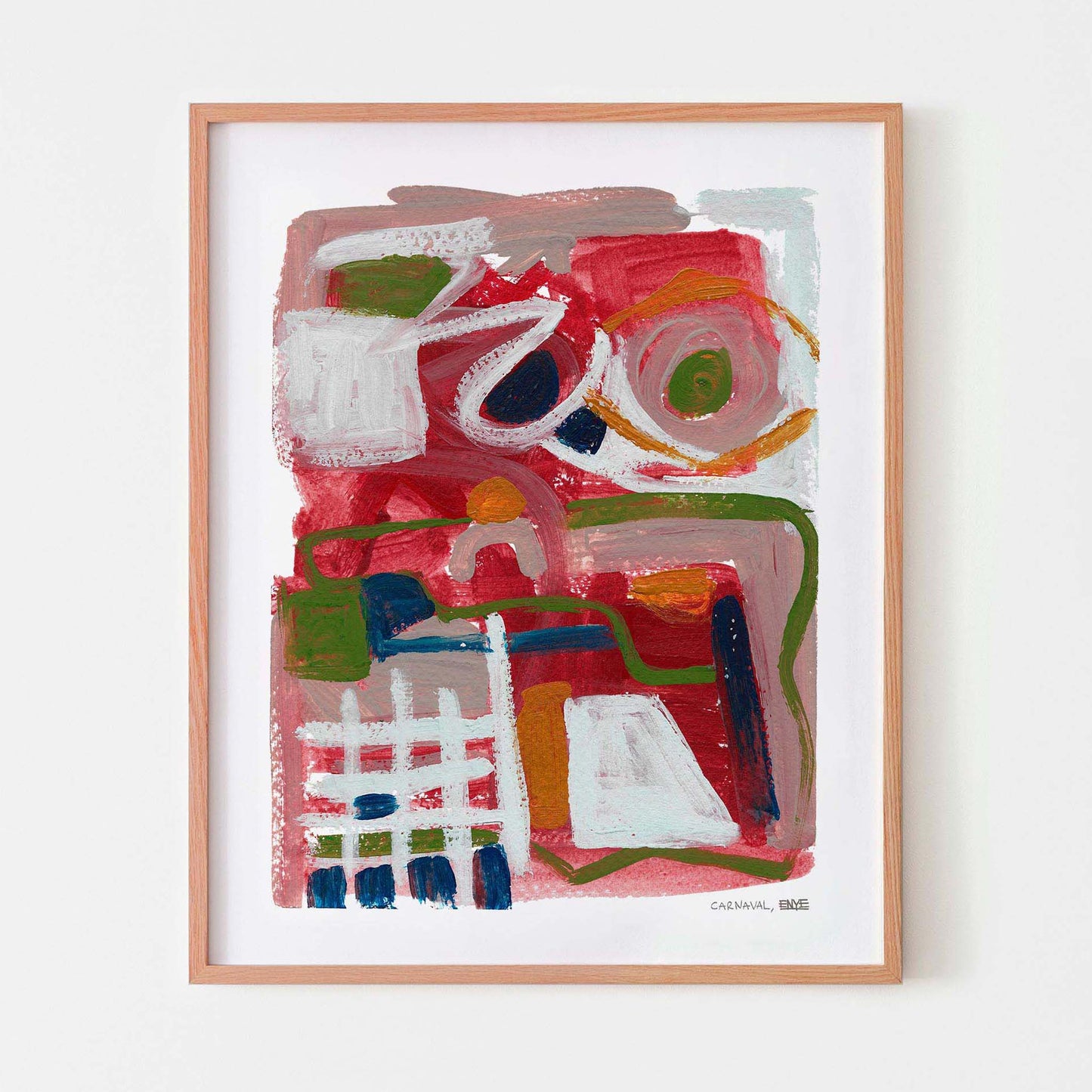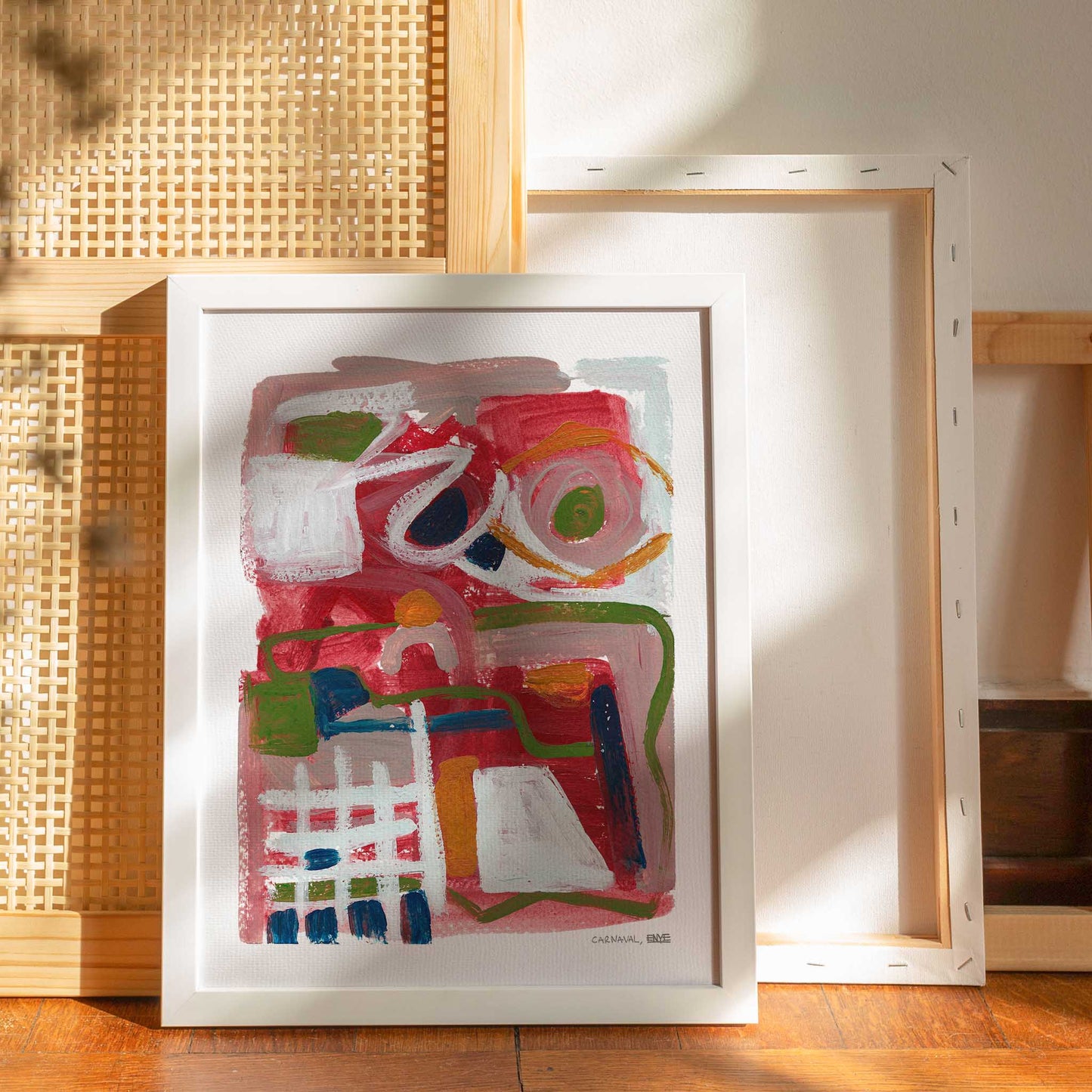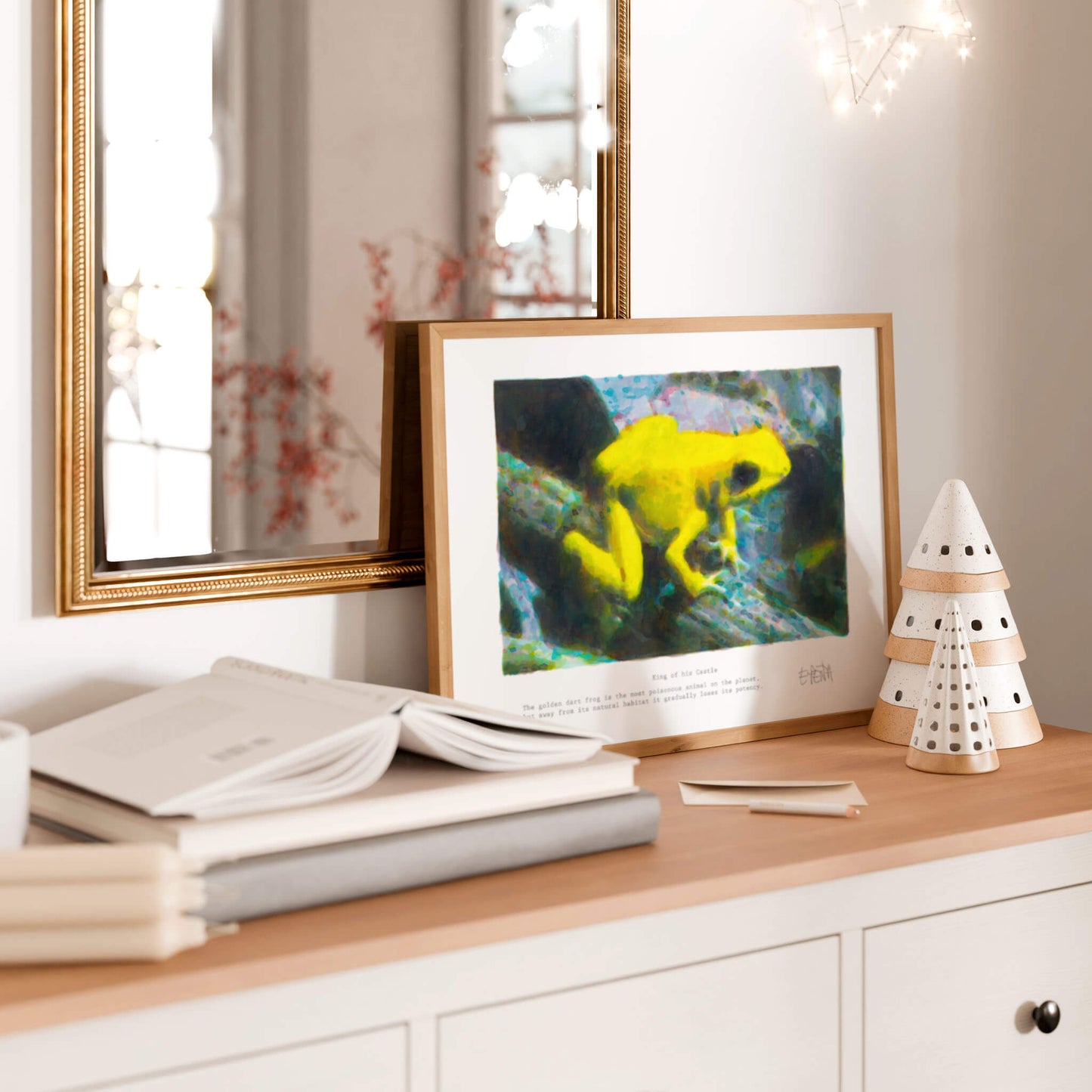Shop limited edition prints running low on stock. Once they're gone, they're gone!

Acrylic vs Glass: Which glazing is best for framing art?
Once you have chosen your art for your home, you’ll need to decide whether to display it in an acrylic or glass frame. Known as the picture frame glazing, the layer of acrylic or glass that you choose will help to protect your art print, photograph or art poster from dust, UV light, heat and humidity.
There are a variety of advantages and disadvantages to framing with glass or acrylic. In this article we cover the pros and cons of both and explain the key factors to consider when choosing a picture frame suitable for your artwork.
We’ll begin by looking at the pros and cons of glass versus acrylic glazing, before taking into account external factors that may influence your choice, such as the size of your artwork and where you’d like to hang it.
Ultimately, we’ll be answering the questions, what is acrylic glazing? What is glass glazing? And are acrylic frames better than glass frames?
Acrylic vs Glass Framing:
Pros and Cons
Glass Picture Frames
Advantages of glass frames
- Glass is a stable glazing material that won’t degrade over time
- Glass is an easy-to-clean option
- Its tough surface makes it difficult to scratch
- Glass can be easily recycled and retains its quality in the recycling process
Disadvantages of glass frames
- Glass is a fragile material and prone to breaking during shipping
- When glass does break it shatters, which will not only damage the artwork in the frame but could potentially cause injury
- Glass naturally has a green tint to it, making it less transparent than acrylic
- Glass is prone to condensation, meaning that moisture may build behind it and damage the art inside the frame
- Glass is a dense and heavy material, making it expensive to ship and harder to hang on a wall safely when a work of art is particularly large
Acrylic Picture Frames
Acrylic frames are also referred to as Perspex frames or Plexiglas frames.
Advantages of acrylic frames
- Acrylic is a resistant material that’s hard to break, making it easy to ship without incurring damage
- Acrylic is a much less dense material than glass and is therefore lightweight, making it cheaper to ship and easier to manage when hanging a framed artwork in the home
- Acrylic is naturally optically pure; it doesn’t have a green tint to it like glass so will allow the true colours of an artwork to show through
- Acrylic production is more energy efficient than glass production, making it a greener option
- Acrylic is shatter-resistant, making it safer to use than glass
- Acrylic is naturally resistant to condensation, meaning it helps to prevent moisture build-up behind the glaze and thus better protects the artwork inside the frame
Disadvantages of acrylic frames
- Acrylic is easier to scratch than glass. However, scratches can be avoided when a frame is cleaned properly and carefully
- Some acrylics are not as easy to recycle as glass
- Acrylics are prone to surface static. While not a problem for art prints and photographs, original pastel works do need to be spaced away from an acrylic glazing
- Under extreme conditions, such as extreme heat or humidity, acrylic glazing may warp
External Factors: Lighting. Location. Size. Sustainability. Cost.
Now that we’re aware of the inherent characteristics of each glazing material, let’s look at the external factors that will help you to decide whether you should frame your art using a glass or acrylic frame.
Lighting
Will your art be exposed to UV light?
Both natural (sunlight) and artificial UV light have the potential to fade your artworks and photographs.
Acrylic is naturally UV resistant up to a certain point and so an acrylic glaze will offer a level of protection for artworks exposed to UV light. Conservation acrylic can also be used, which offers greater UV protection than standard acrylic. It’s also more affordable than conservation glass.
Glass does not naturally offer any UV protection and so art glazed with standard glass will be fully exposed to harmful UV light. Conservation glass offers UV protection but is expensive and often reserved for museum use or high-end private collections.
Overall, acrylic glazing is best for reducing fading. That said, we advise that you never hang your art in direct sunlight.
Different types of art are also prone to different levels of fading – oil paintings may fade more easily than acrylic paintings, for example. At Studio Parga all of our art prints are printed on archival art paper using lightfast pigment inks. When framed behind glass or acrylic, displayed under typical lighting conditions and cared for properly, our art prints will last approximately 80 years – that’s a whole lifetime of enjoyment!
Location
Where would you like to hang your art?
For busy areas with a lot of footfall, where an artwork is at risk of being knocked (such as a hallway, a landing or a lobby), the safer option would be to choose shatter-resistant acrylic.
Framed art in a quieter space with less foot traffic, or art above furniture such as a dresser or drawers, where it won’t be knocked, could be glazed with either acrylic or glass.
Artworks placed over walkways or above seated areas and beds can be framed in acrylic for safety. Should the frame ever fall from the wall, acrylic won't shatter or break like glass, making it a much safer option.
Size
Are acrylic frames better for large artworks?
Large artworks can have a striking effect in any room. If glazed with glass then your large framed art print or artwork may need extra support when hung on the wall, and you’ll need to check that the wall can take the heavy weight of a large piece of art glazed with glass.
Furthermore, your glazer may need to ensure that there isn’t too much strain placed on the frame itself when framing large artworks with glass. A larger frame moulding and/or braces may be needed for glass glazing, along with a heavy-duty hanging kit.
By opting for acrylic, which is much lighter, these problems can be avoided when hanging a large work of art.
Sustainability
Which is more environmentally friendly, glass or acrylic glazing?
Acrylic is a manmade material created from non-renewable resources. Yet it can, like glass, be recycled repeatedly.
Glass is made from natural materials and is completely recyclable. However, it results in higher greenhouse gas emissions than acrylic during the production process. Furthermore, the weight of glass increases its negative environmental impact by leading to greater fuel expenditure and higher costs during transportation and shipping.
Cost
Which is cheaper, glass or acrylic glazing?
Consider your budget alongside the factors explained above and adapt as necessary.
Were you hoping to hang your art in a room filled with lots of UV light? Then you’ll need to opt for a glazing with extra UV protection and this will be more costly. If such an option falls outside of your budget, then you could save money by moving your art to somewhere else in your home, away from strong UV light, and opting for a glazing with standard UV protection, such as standard acrylic.
Finally, ask yourself whether you’re making a short-term or long-term investment in art. If you plan to have the same piece of art in your home for a lifetime, it may be worth investing in museum-standard framing to keep it fully protected. But if it’s an art poster that you’ll likely switch for something else in a few years, then you can consider more budget-friendly framing options.
Conclusion
Glass glazing is the traditional go-to choice for many, and it is true that glass does offer a durable and high-end finish for your art. It works particularly well for small artworks and is completely recyclable. However, there are some important disadvantages to glass glazing, such as its fragility, hefty weight and green tint.
An acrylic glazing in picture frames is the more suitable option for most artworks since it’s lightweight, shatterproof, cheaper to ship and is recyclable. When coupled with the fact that acrylic doesn’t have the same green tint to it that glass does, the advantages of acrylic glazing make it a popular choice among professionals and amateurs alike.
Which glazing do we use in our frames at Studio Parga?
Here at Studio Parga, we use acrylic glazing in all of our frames. By using cast acrylic, we are able to provide UV protection for your fine art prints, as well as keeping your prints safe from factors such as condensation and dust. When coupled with our archival cotton rag paper and lightfast pigment inks, we are confident that we're able to offer our customers framed prints that will bring them joy for an entire lifetime!
But don't just take our word for it.
Shop our exclusive selection of art prints today and let us know what you think.
